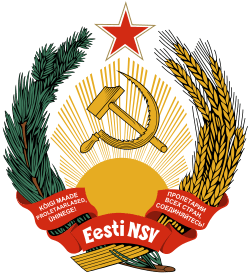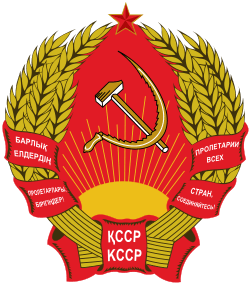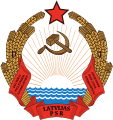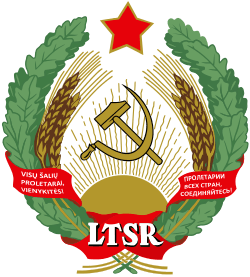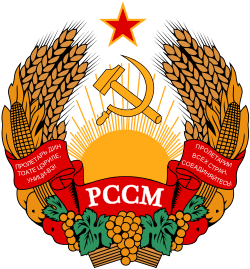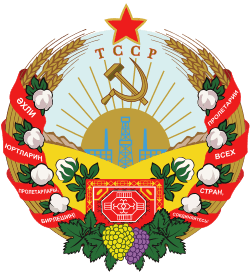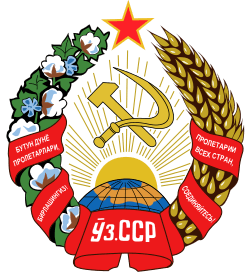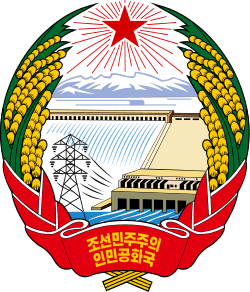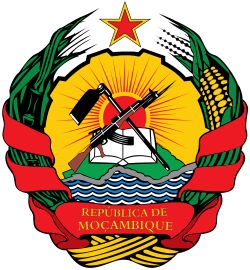Red star

A red star, five-pointed and filled (★), is an important symbol which has been used for various purposes, such as: state emblems, flags, monuments, ornaments, and logos.
Symbol of communism
The five-pointed red star has often served since about 1917 as a symbol of communism. One interpretation sees the five points as representing the five fingers of the worker's hand, as well as the five continents. A lesser known suggestion is that the five points on the star were intended to represent the five social groups that would lead Russia to communism: the youth, the military, the industrial labourers, the agricultural workers or peasantry, and the intelligentsia.
A red star became one of the emblems, symbols, and signals representing the Soviet Union under the rule of the Communist Party, along with (for example) the hammer and sickle. In Soviet heraldry the red star symbolized the Red Army and the military service - as opposed to the hammer and sickle, which symbolized peaceful labour.
Different countries across Europe treat the symbol very differently: some have passed laws banning it, claiming that it represents "a totalitarian ideology", while other countries hold a very positive view of it as a symbol of antifascism and resistance against Nazi occupation.
-

Red star, Red Army 1918
-

Red Cavalry poster with budenovka, 1920
-
.svg.png)
Coat of arms of the Latvian Socialist Soviet Republic (1919–1920)
History
The star's origins in a mass political movement are found in the Russian Civil War and the end of the First World War, though its creator is unknown. It is most often thought that Russian troops fleeing from the Austrian and German fronts found themselves in Moscow in 1917 and mixed with the local Moscow garrison. To distinguish the Moscow troops from the influx of retreating Russians the officers gave out tin stars to the Moscow garrison soldiers, to wear on their hats. When those troops joined the Red Army and the Bolsheviks they painted their tin stars red, the color of socialism, thus creating the original red star.[1] Another claimed origin for the red star relates to an alleged encounter between Leon Trotsky and Nikolai Krylenko. Krylenko, an Esperantist, was wearing a green star lapel badge; Trotsky enquired as to its meaning and received an explanation that each arm of the star represented one of the five traditional continents. On hearing this, he specified that a similar red star should be worn by soldiers of the Red Army.[2] In a speech given by Trotsky in 1923, he mentions the red star:
For the seventh time since the overthrow of Tsardom, for the sixth time under the sickle and hammer of the Soviets and the Red star of battle[3]
And the badge was used in the Red Army during the civil war:
Immediately after the October revolution all ranks of the 3rd Petrograd regiment wore their old uniforms but with shoulder-board removed and with Tsarist cap insignia replaced by the red star[4]

Shortly before the founding of the Soviet Union, the U.S. Army Signal Corps' aviation section used the red star for the national insignia for U.S. aircraft during the Pancho Villa Expedition to apprehend the Mexican revolutionary, as just one instance of a series of interesting "crossovers" of American and Russian/Soviet military aircraft markings, during the 20th century's first three decades.
Joseph Stalin is also known for wearing a pendant resembling the red star, as he did at the Teheran Conference.
-

Kremlin Star, Moscow, (1937)
-

Soviet Order of Victory, (1945), USSR
-

Plate by Adamovich, (1921), USSR
Wider use
Following its adoption as an emblem of the Soviet Union, the red star became a symbol for communism in a larger sense. The symbol became one of the most prominent of the Soviet Union, adorning all official buildings, awards and insignia. Sometimes the hammer and sickle was depicted inside or below the star. In 1930, the Order of the Red Star was established and given to Red Army and Soviet Navy personnel for "exceptional service in the cause of the defense of the Soviet Union in both war and peace".
-

Coat of arms of the Russian Soviet Federative Socialist Republic
The red star was adopted by several Communist states and often placed on their respective flags and coats of arms, for example on the flag of the Socialist Federal Republic of Yugoslavia. Separatist and socialist movements also sometimes adopted the red star, such as the Estelada flag in the Catalan countries.
In former Yugoslavia the red star was not only considered a communist symbol, as were the hammer and sickle; but also as a symbol of resistance against fascist and Nazi occupation and their ethnic policies instead. The red star was worn by Tito's partisans as an identification symbol, often including people with different political views, or even with a religious background. As the red star spread to communism in the East, it was adapted: while some states kept the star as it was, some used a yellow star, particularly on a red field, with the same symbolism. The Far Eastern Republic used a yellow star on its military uniforms, and the flag of the People's Republic of China has five yellow stars on a red field. The flag of Vietnam also has a yellow star on a red field. In Brazil, however, the red star remained as it was.
-

Coat of arms of the Federal State of Croatia (1943–1947)
-
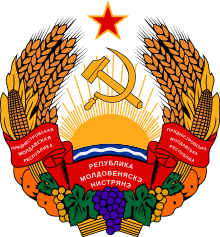
Coat of arms of Transnistria (1991)
-
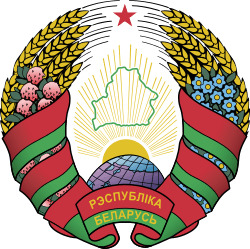
National Emblem of Belarus
-

Emblem of Laos (1975-1991)
-

Emblem of the People's Republic of Mongolia (1960-1992)
-

Coat of arms of the People's Republic of Benin (1975–1990)
-

Coat of arms of Burkina Faso 1984-1997
-
.svg.png)
Coat of arms of the People's Democratic Republic of Yemen (1970-1990)
-
.svg.png)
The Coat of arms of communist Czechoslovakia (1961-1989)
The Russian military newspaper is also called the Red Star (Russian: Krasnaya Zvezda). Several sporting clubs from countries ruled by Communist Parties used the red star as a symbol and named themselves after it, such as the 1991 European and World champions the Yugoslav club Red Star Belgrade (Serbian: Crvena zvezda/Црвена звезда), or Eastern German Roter Stern Leipzig, Angolan Estrela Vermelha do Huambo, or Estrela Vermelha from Beira, Mozambique or Czechoslovak Rudá Hvězda Brno. Even some sports teams from non-communist countries used it, such as French Red Star from Paris, Swiss club FC Red Star Zürich, English Seaham Red Star F.C., and even an American woman soccer club Chicago Red Stars.
Since the fall of the Warsaw Pact, the red star has been banned in some countries.
In 1970, the Rote Armee Fraktion or Red Army Faction (RAF) was officially founded. The RAF, which described itself as a communist "urban guerilla" group, was a postwar West Germany left-wing terrorist organisation. Its highly recognisable symbol was a red star and a Heckler & Koch MP5. The RAF operated from the 1970s to 1998, committing numerous crimes, especially in the autumn of 1977, which led to a national crisis that became known as the "German Autumn". It was responsible for 34 murders—including secondary targets such as chauffeurs and bodyguards—and many injuries in its almost 30 years of existence.
-

Flag of the Italian Partisan 63rd Brigade
-

Catalan estelada
-

Galician estreleira
-
.svg.png)
Castilian pendón comunero
-

Estrelada aragonesa
The Brazilian leftist Worker's Party uses it as its symbol with the party acronym (Portuguese: Partido dos Trabalhadores - PT) inside. The red star was included in the flag of the Ejército Zapatista de Liberación Nacional (EZLN) or Zapatista Army of National Liberation upon their formation in 1994. The EZLN, an armed revolutionary group based in Chiapas, Mexico, takes its name from the Mexican revolutionary Emiliano Zapata and is most often represented by Subcomandante Marcos, though he is not their leader. The same flag, a black flag with a red star, was used by US rock band Rage Against the Machine – who were vocal supporters of the EZLN and other left causes – so much so that the symbol came to be associated with the band, separate from the EZLN. The red star is used by the Workers' Party (Brazil). It is also used by the militant South African shack dweller's movement Abahlali baseMjondolo.
Hugo Chávez and his supporters in Venezuela have used the Red Star in numerous symbols and logos, and have proposed including it in the logo of the United Socialist Party of Venezuela (PSUV). It was also used throughout 2007 as a symbol of the "5 Engines of the Bolivarian Socialist Revolution".
North Korea's Red Star OS takes its name and logo from the communist red star.
-

Original Soviet VVS roundel
with white border, 1918–91 -

Russian Red Star, 2010-2014
-

Emblem of the People's Liberation Army
-

Symbol of the Ministry of Defense of the Republic of Belarus
-

The coat of arms of the Armed Forces of the Republic of Kazakhstan
-

Symbol of the Brazilian Worker's Party
By March 2010, the Russian government readopted the Soviet red star (but now with a blue outline reflecting the three colors - white, blue and red - of the Russian flag) as a military insignia. The Russian Air Force used this star as a roundel; it could also be applied on vehicles until 2014.[5]
As of 2014 the Armed Forces of Belarus still use the old Soviet red star. The coat of arms of Armed Forces of the Republic of Kazakhstan includes a modified version of the Soviet red star.
Red stars in labels and logos
-

Logo of Martinazzi
-

A San Pellegrino bottle
-
Label of a Heineken bottle
-

Logo of AKO, product of the Soviet Union
-

Logo of Macy's department stores
-

Sports club « Stella Rossa », Austria
The red star was used by the Texaco oil company prior to 1966. Its overseas division Caltex also used the red star. The Red Star is currently used on the state flag of California, Sacramento Republic FC Logo (pic) and registered trademark of Red*Star Auto Works Inc. (pic).
Holiday usage
_12.jpg)
The red star was commonly placed atop New Year trees in the Soviet Union, a tradition that continues to this day in Russia.
Legal status
The red star and the hammer and sickle are regarded as occupation symbols as well as symbols of totalitarianism and state terror by several countries formerly occupied by the Soviet Union. Accordingly, Latvia,[6] Lithuania[7] and Hungary[8] have banned the symbol. In Poland, the Parliament passed in 2009 a ban that referred generally to "fascist, communist or other totalitarian symbols", while not specifying any of them.[9] Following a constitutional complaint, it has been abolished by the Constitutional Tribunal as contrary to the art. 42(1) (construed here as requiring adequate precision of a law that imposes penal liability) in connection with art. 54(1) (the freedom of speech) and art. 2 of the Polish Constitution (effective from 03.08.2011). A similar law was considered in Estonia, but eventually failed in a parliamentary committee as too onerous for constitutionally guaranteed freedoms, most importantly, freedom of speech. Georgia is planning to introduce measures banning communist symbols, including statues of Joseph Stalin.[10]
The European Court of Human Rights has ruled, in a similar manner, against the laws that ban political symbols, which were deemed to be in clear opposition with basic human rights, such as freedom of speech,[11][12] confirmed again in 2011 in case Fratanolo v. Hungary.[13] The decision has been compared[14] to the legislation concerning the symbols of Nazism, which continue to be banned in several European Union member states, including Germany and France.
There have been calls for an EU-wide ban on both Soviet and Nazi symbols, notably by politicians from Lithuania, Estonia, the Czech Republic, Hungary and Slovakia. The European Commissioner for Justice, Franco Frattini, felt it "might not be appropriate" to include communist symbols in the context of discussions on xenophobia and anti-Semitism.[15]
In 2003, Hungarian politician Attila Vajnai was arrested, handcuffed and fined for wearing a red star on his lapel during a demonstration. He appealed his sentence to the European Court of Human Rights, which decided that the ban was a violation of the freedom of expression, calling the Hungarian ban "indiscriminate" and "too broad".[16]
In Slovenia, the red star is respected as a symbol of resistance against fascism and Nazism. On March 21, 2011, Slovenia issued a two-euro commemorative coin to mark the 100th anniversary of the birth of Franc Rozman, a partizan commander, featuring a large star that represented a red star.
See also
- Five-pointed star
- Star of Bethlehem
- Communist symbolism
- Hammer and sickle (☭)
- Hollywood Walk of Fame
- FC Red Star Belgrade
- FC Red Star Saint-Ouen
- FK Velež Mostar
- Waasland-Beveren
- Red flag (politics)
- Pancho Villa Expedition, when American military aircraft used a red star insignia (1916–17)
External links
| Wikimedia Commons has media related to Red stars. |
References
- ↑ Khvostov, Mikhail (1996), The Russian Civil War (1) The Red Army. Published by Men-At-Arms. ISBN 1-85532-608-6.
- ↑ Pri La Stelo: Militista simbolo
- ↑ Speech At the Parade on Red Square, 1 May 1923
- ↑ The Russian Civil War (1): The Red Army By Mikhail Khvostov, Andrei Karachtchouk, page 37 (there are several mentions to the use of the red star from 1918)
- ↑ Russian Defense Ministry Reveals New Military Symbol News, The Moscow Times
- ↑ "BC, Riga, 16.05.2013". The Baltic course. Retrieved 3 August 2014.
- ↑ "Lithuanian ban on Soviet symbols". BBC News. 17 June 2008. Retrieved 22 May 2010.
- ↑ Hungarian Criminal Code 269/B.§ (1993) "(1) A person who (a) disseminates, (b) uses in public or (c) exhibits a swastika, an SS-badge, an arrow-cross, a symbol of the sickle and hammer or a red star, or a symbol depicting any of them, commits a misdemeanour—unless a more serious crime is committed—and shall be sentenced to a criminal fine (pénzbüntetés)."
- ↑ "Poland Imposes Strict Ban on Communist Symbols". Fox News. 27 November 2009.
- ↑ Communist symbols to be banned in Georgia, BBC News, 4 May 2014, retrieved 13 May 2014
- ↑ ECHR judgment in case Vajnai v. Hungary
- ↑ Wearing a red star in Hungary 'is a basic human right' : Europe World
- ↑ Press release 222(2011). Registrar of ECtHR 03.11.2011.
- ↑ European Court considers Labour Party's red star – in Hungarian
- ↑ "EU ban urged on communist symbols". BBC News. 3 February 2005. Retrieved 22 May 2010.
- ↑ Curry, Andrew (2009-11-24). "Vestiges of 'Genocidal System': Poland to Ban Communist Symbols". Spiegel. Retrieved 2013-09-14.



.svg.png)
